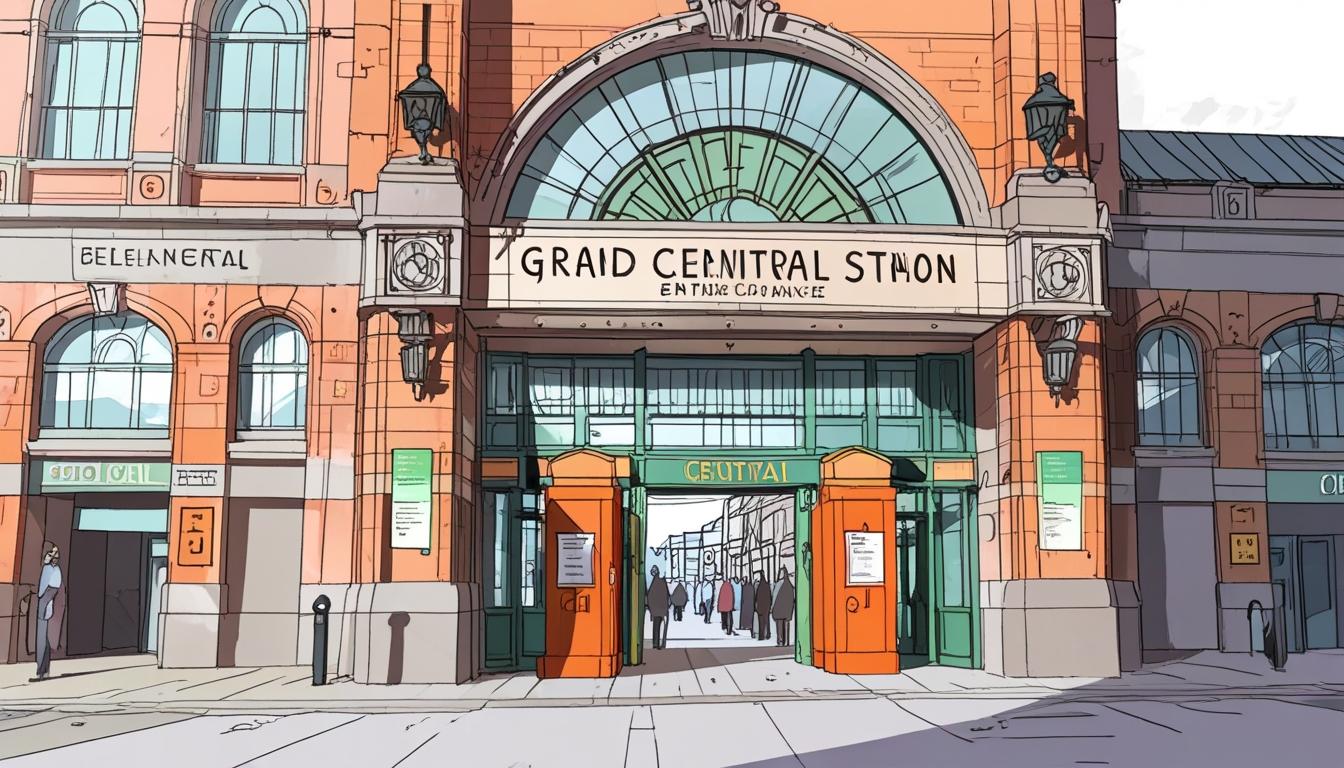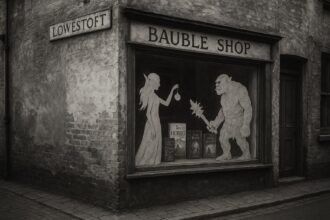The introduction of Irish and English signage at Belfast’s £350 million Grand Central Station has ignited heated political debate, reflecting deeper cultural divides despite the station’s role as a symbol of potential societal reconciliation.
Grand Central Station in Belfast has recently become the focal point of an intense political discussion surrounding the implementation of bilingual signage. The station, which opened eight months ago at a cost of £350 million, serves as the largest integrated transport facility in Ireland, combining both bus and train services.
On a sunny afternoon last week, the atmosphere at Grand Central Station appeared calm, contrasting sharply with the political tensions being voiced regarding the station’s dual language signage initiative. The idea, although standard in parts of Scotland and Wales, has sparked contentious debate in Belfast, with some voices suggesting that it poses a threat to the union.
Noel Doran reflects on his visits to the station, noting the lack of adequate arrangements for taxis and cycle racks, questioning how a facility of such size could overlook these essential amenities. Upon approaching the station from Great Victoria Street, visitors must navigate what resembles a construction zone before entering a concourse that lacks distinctive features typically associated with Belfast. While a small photographic exhibition celebrates current transport staff, external artwork feels almost like an afterthought.
The notion of bilingual signage has led to what Doran describes as a “contrived argument” among political factions. Despite the controversy, initial announcements within the station have incorporated Irish language greetings, although this practice contrasts with the approach taken at Connolly Station, where English was prioritised.
Doran reflects on the historical context in which Grand Central Station is situated. He recalls a traumatic event that occurred in January 1980 during his tenure at a local newspaper, where a bomb planted by IRA members detonated on a train he often took. The incident resulted in significant loss of life and underscored the violent past associated with the region.
He suggests that Grand Central Station, located between the loyalist Sandy Row and the nationalist Grosvenor Road, could symbolise potential societal transformation, provided that mutual respect is extended across the divided community. In his view, the station should embody a future where all sections of society feel acknowledged, rather than a site of division.
Overall, the development around Grand Central Station is emblematic of the ongoing complexities within Northern Ireland’s political landscape, highlighting both infrastructural challenges and the nuances of cultural representation in public life.
Source: Noah Wire Services
- https://www.belfasttelegraph.co.uk/news/northern-ireland/irish-language-groups-stage-protest-at-belfast-grand-central-station-over-lack-of-dual-signage/a361943958.html – This article reports on a protest by Irish language groups at Belfast’s Grand Central Station due to the absence of dual-language signage, highlighting the political tensions surrounding the issue.
- https://www.irishnews.com/news/northern-ireland/campaigners-welcome-council-backing-for-dual-language-signage-at-new-belfast-grand-central-station-V36UWNS7BVHUTGESQG5K3HXW4U/ – This piece discusses the Belfast City Council’s support for bilingual signage at the new Grand Central Station, reflecting the political debate over the station’s dual language initiative.
- https://belfastmedia.com/translink-travelling-in-the-wrong-direction-on-irish-language-rights-say-campaigners – This article covers criticism from Irish language campaigners regarding Translink’s decision to exclude Irish language signage from the new Grand Central Station, underscoring the political controversy.
- https://www.belfasttelegraph.co.uk/news/northern-ireland/belfast-grand-central-station-minister-confident-irish-language-signs-can-be-resolved-by-april-2025/a953541335.html – This report features Infrastructure Minister John O’Dowd expressing confidence that the issue of Irish language signage at Grand Central Station will be resolved by April 2025, highlighting the political discussions surrounding the matter.
- https://en.wikipedia.org/wiki/Belfast_Grand_Central_station – This Wikipedia page provides detailed information about the Grand Central Station in Belfast, including its opening, facilities, and the controversy over bilingual signage, offering historical context to the political debate.
- https://www.bbc.co.uk/news/articles/c3vxy731egqo – This BBC News article discusses the exclusion of Irish language signage from the new Grand Central Station, highlighting the political tensions and debates surrounding the issue.
- https://www.irishnews.com/opinion/noel-doran-i-often-think-about-the-dead-on-the-455-from-ballymena-and-how-easily-i-might-have-joined-them-DHJNZIWKXZFV3DMDCMTEGU4HOM/ – Please view link – unable to able to access data
Noah Fact Check Pro
The draft above was created using the information available at the time the story first
emerged. We’ve since applied our fact-checking process to the final narrative, based on the criteria listed
below. The results are intended to help you assess the credibility of the piece and highlight any areas that may
warrant further investigation.
Freshness check
Score:
8
Notes:
The narrative references recent political discussions and the opening of Grand Central Station eight months ago, suggesting relatively fresh information. However, specific details or quotes about ongoing political debates might be common topics and not uniquely contemporary.
Quotes check
Score:
5
Notes:
There are no direct quotes provided that can be verified against earlier sources. This makes it difficult to assess whether the quotes are original or repeated from other materials.
Source reliability
Score:
8
Notes:
The narrative originates from The Irish News, a reputable publication known for its coverage of local news and political issues. While local context might influence reporting, the outlet generally maintains good standing in terms of reliability.
Plausability check
Score:
9
Notes:
The claims about Grand Central Station and its political context are plausible given historical and ongoing political tensions in Northern Ireland. The discussion around bilingual signage aligns with existing political debates in the region.
Overall assessment
Verdict (FAIL, OPEN, PASS): PASS
Confidence (LOW, MEDIUM, HIGH): HIGH
Summary:
The narrative is likely reliable based on its recent context, plausible claims, and the credible nature of its origin. The political discussion surrounding Grand Central Station aligns with well-documented local issues in Belfast.













